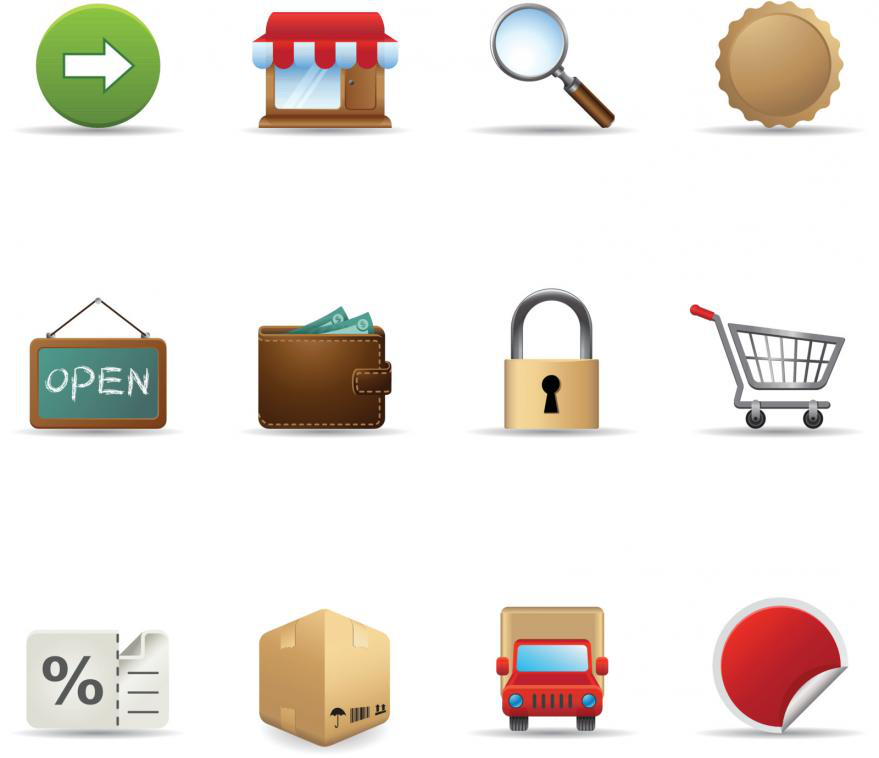No two websites are the same. Rather, each and every one of them is unique in its own way. However, there are certain trends that most websites follow. These trends are usually seasonal, and they change when they are replaced with fresh ideas and technology.
With that said, following a trend is no guarantee that it will automatically lead to better ‘conversion rates’ (when a simple visitor to a site ‘converts’ to a loyal customer, it is known as a ‘conversion’) or universally great user experiences. Albeit, there are certain elements that most e-commerce sites should have in order to stay relevant and competitive in their target market. Let us take a look at a few of them:
1. They Should Be as User-Friendly as Possible
The age-old adage “keep it short and simple” holds as true today as it ever did before. If you are going to design an overly complicated website, it is possible that you will love the design yourself, but the target audience will not appreciate your creativity. While simplicity should be your core goal as far as good design is concerned, it certainly does not mean that you have to sacrifice elegance in order to achieve this aim.
Most visitors consider user-friendliness to be the single most important attribute of a website. If it is difficult to navigate, they will simply close it and try and find a simpler version of the same.
The key function of a website is to help users get to their desired product, service, or information as fast as possible and without running into any sort of unnecessary complexity. If there are obstacles in the process, then they can also clog or choke up the ‘path to purchase.’
An online retail outlet has minutes—if not seconds—in which a sale must be made. The more difficult the website is to navigate through, the smaller the window of opportunity to convert a new user. This is why it is very important to focus on the end-user experience. You can do this by providing multiple filters, shopping categories, as well as accurate comparison capabilities.
2. Online Reviews Are Very Important
Most online consumers will not buy a product until they are satisfied that it delivers the requisite features and is both reliable and durable as well. However, the online buyer does not possess the ability to visually inspect or touch the product that he wants to purchase. This means that the only way to figure out if the product delivers on its promise is to check online reviews. Such reviews will help sway his decision and if the reviews are negative, he may give up on buying the product altogether or vice versa.
Depriving your potential customer of this ability to review your products with the help of other peoples’ experiences can adversely affect the purchase decision. The reviews are the yardstick through which the potential customer gauges the performance of a product.
Without that yardstick, he will be very reluctant to fork out the funds to become a sort of ‘guinea pig’ for a product that may or may not work as advertised.
In other words, if you don’t have a review option on your site, odds are that the consumer will be less likely to buy the product from you. In fact, it is difficult to understand the tremendous impact of online reviews on an e-commerce website until you see positive reviews tracking in sales.
3. It Should be A Mobile-Friendly Site
There was a time when most online shopping was done via PCs and laptops. However, that was then, and this is now. Today’s net-savvy consumer can access the internet via their smartphone or any other smart device. This means that they can shop anytime and anywhere thanks to the increasing proliferation of 3G, 4G and now even 5G connections that have made shopping a cinch.
This is why mobile phone accessibility is a must-have e-commerce website feature. In fact, your e-commerce site should never be dependent on any specific type of device. On the contrary, it should seamlessly adapt to each and every device through which the customer accesses it.
Always remember, today’s empowered customer is used to purchasing through the simple swipe of a finger. If an e-commerce site denies him that facility, he will simply find one that is more mobile-friendly and shift his business there.
4. Creating Wishlists Is A Great Idea
Your average Wishlist works on the simple “shop, save and share” concept.
These lists can be very useful when it comes to the creation of demand from the customer. Once your potential customer has created a wishlist on your site, the odds are that he will want to check his list again and again. If he does this often enough, he will eventually end up making a purchase.
After all, it is basically a list of his wishes and consists of products that he wants to purchase for himself, as and when he will be able to find funds to make the purchase.
5. ‘In-Store’ Features are Very Important for Large Online Super Stores
If a customer is looking for a specific product category, he would not want to go through any other type of products until he just happens to stumble upon the product he likes and wants to buy.
This feature can guide him towards a specific product category that he is interested in so that he takes the first tentative step in the e-commerce marketing funnel. Moreover, this is also a really creative way to get the prospective customer to browse and look around. This can also be used as an e-commerce shopping cart feature as well. If used properly and imaginatively, it can help in generating ‘instant gratification’ as the customer lands in the category that he wanted to peruse in the first place.
6. The ‘Related Items’ Template
The term, “you will definitely like this” has the potential to cause both curiosity as well as a lot of excitement. Since the prospect is already interested in the product, it is a good idea to let him check out related products. If he finds something he really likes amongst the suggestions, he might make a purchase decision on the spot.
7. The Live Chat Option: A Great Way to Keep Them Interested
Prospective customers have questions—and you have the answers to these questions.
Most people don’t want to take the trouble to email or call a number to find the desired information. They will be more interested in getting the information ASAP or they will end up going to your competitor. This is the part where live chat comes into the picture. There are certain reasons why customers simply love the ‘Live Chat’ option.
Live Chat Is Very Convenient
A helpful “Click Me!” is as good a call to action as anything else. No need to go into the details if you can just start chatting with a knowledgeable salesman.
Live Chat Offers Instantaneous Answers
If a person has to wait for hours or days to get an email from the company, he will take his business elsewhere.
Life Chat Has The Power of The Human Touch
A person answering all the questions in a real-time environment will almost always be more preferable than an impartial computer-generated standard email response.
Live Chat Is A Veritable Goldmine of Consumer Data
An online chat option can easily help you to understand exactly what your customer wants from you. This will be of great help in increasing your customer service efforts.
8. The Frequently Asked Questions (FAQ) Page
All e-commerce or even B2B sites should always have an FAQ option on their landing page. This holds even more true for all those websites that usually sell really expensive items. When a customer buys an expensive product, he might be plagued with both pre and post-purchase dissonance. However, it is possible to avoid it and also dispel most of the potential buyer’s fears and concerns by having a comprehensive FAQ page on your site.
9. Social Media Proof and its Relevance
If your website has plenty of social media votes of confidence from well-known influencers, then it will help to impart an element of authenticity to your e-commerce website. Furthermore, it is also possible to create an emotional connection to a product by getting it endorsed by someone who has a strong following in that specific field.
Apart from that, social media consists of friends and fellow peers. These people are considered to be highly impartial and therefore their opinions matter more than any advertised claims. If they approve of the product, then it will help greatly in making a positive impression for a first-time buyer.
10. Never Underestimate Safety and Security Features
This is one of the very best e-commerce backend features that you can have on your website. If your online retail store is not safe and secure, then it might be flagged by Google’s Chrome or Mozilla Firefox or any other ‘up to date’ browser. The customer will be warned that your website is not secure, and he will go to a more secure site. Apart from that, should there be any sort of glitch in the system, it can lead to the customer’s credit card information being compromised. Once your target audience finds out that your site is not secure enough, few customers—if any at all—will ever want to trust you with their precious funds again.
11. Ensure That The ‘Fast Checkout’ Process Is as Fast as Possible
Speed is of the essence here. In fact, the faster the whole checkout process, the more likely a potential customer will purchase a product. He simply won’t get the time for doubts to come in and change his mind. Basically, you will need only 3 separate sections or pages to get the job done:
- The ‘confirmation of purchase’ section
- The delivery info and the address of the purchaser
- A final ‘thank you’ page
12. Photos
In this day and age, it is absolutely imperative that your products should have professional quality pictures and related images. Simple product descriptions will not sell a product on their own. Apart from that, it is equally important that these images should be well-designed and carefully placed to attract the target audience.
13. Detailed Shipping and Transport Information
If the delivery and shipment charges seem to be higher than the price of the product itself, chances are that the customer will end up feeling that he has been taken for a ride and swindled! Not only will he write a really bad review, but he might never bother to come back to the site again. This is why all delivery charges must be prominently displayed on the site.
14. The Contact Us Page
The contact us page is the main conduit between you and your customers. In case there is anything wrong with the product or delivery, they will get back to you via this page only. If the information is relevant and up-to-date it will make it easier for them to find you and communicate their grievances.
15. A Sound and Well-Articulated Product Returns Policy
Suppose your customer is not satisfied with the product supplied to him. If this happens, they must be able to return it back to you. This holds true not just for online shoppers but for B2B e-commerce sites as well.
In light of the above, we can easily conclude that creating a stellar e-commerce website is not really very difficult. It just needs a bit of awareness and imagination.
If you were to follow the above 15 pointers, then you are already on your way to enjoying the unprecedented success of your online e-commerce website.
- A Step-By-Step Guide to Designing a Mobile-Friendly Website - November 11, 2024
- How Content Marketing Enhances Your Website’s SEO Performance - November 11, 2024
- How to Pick the Perfect Color Scheme for Your Website Design - November 11, 2024





